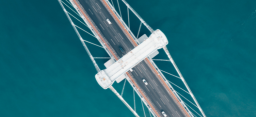Overview
The Unified Patent Court (UPC) will officially open for business on June 1, 2023. From that date, the UPC will have exclusive jurisdiction over new and existing European Patents in respect of the participating countries. This powerful new forum for patent litigation will provide cross-border remedies effective in up to 17 countries initially, with more countries expected to join in the future. The UPC will also provide an opportunity to revoke patent protection in those countries through a single procedure.
Taking into account the size of the market within its jurisdiction and its incentives, the UPC is expected to become the most important forum for patent litigation in Europe, if not worldwide.
While a company might “opt-out” its own European patents, litigation before the UPC may prove unavoidable. For example, a defendant does not have the option of opting-out of the UPC’s jurisdiction. In addition, the possibility of opting-out will be removed after a transitional period that is currently due to end in 2030. This means it is vital for companies to foster a complete understanding of the new system.
In Depth
A Leap Into the Unknown?
UPC actions will be heard by a multinational panel of judges in a local, regional or central division. The panels will include two judges drawn from respective local courts and, in some cases, a technically qualified judge, such as a patent attorney or litigator.
There are currently 13 local divisions spread across 10 countries, and 1 regional division covering Nordic-Baltic countries. The Central Division has sections in Munich and Paris, with cases divided between them according to field of technology. Infringement cases and counterclaims for invalidity will usually be heard in the local or regional divisions, unless there is a related matter in progress before the Central Division, such as an action for revocation or a declaration of non-infringement regarding the same patent and between the same parties.
Although national patent law between the participating countries is largely harmonized, there are some differences in the way it is applied in local courts. For example, UPC local divisions are expected to consider infringement matters and counterclaims for revocation together in most cases. While such combined proceedings are normal in many of the participating countries, certain national courts tend to bifurcate proceedings in which infringement and validity are heard separately. Other differences include the procedures for considering infringement by equivalents, processes for gathering evidence, claim construction approaches, and the role of file-wrapper estoppel.
Given the uncertainties of the new, untested court, it is not surprising that there is apprehension towards it. However, experience suggests that a new litigation forum is likely to grow in popularity as it delivers on its foundational objectives. As an analogy, when the Patent Trial and Appeal Board (PTAB) was formed in 2012, there was initial scepticism regarding the risk of estoppel it may present for later litigation, with broad speculation that few cases would be brought to that tribunal. But after the first key decisions were issued, the number of filings at PTAB increased dramatically – the number of filings more than doubled in number from 2013 to 2014 and have since remained at that level. It seems likely that the present apprehension will diminish as the UPC develops a body of its own case law.
Advantages of the UPC
The UPC provides an efficient, centralized forum for enforcing a European patent, with the real possibility of obtaining a cross-border injunction.
The UPC will also allow for centralized revocation of a European patent in the participating countries, regardless of whether the opportunity to file a European Patent Office (EPO) opposition has expired. It will also allow a patent to be challenged even if a previous EPO opposition was unsuccessful.
Further, the UPC intends to provide speedy decisions. The aim is to hold a hearing within 12 months of an action being initiated, with a written decision following within 6 weeks, although initial cases are expected to take longer. This means that the UPC is likely to provide time and cost savings, as well as providing consistency between the participating countries, when compared with multiple, parallel national actions.
The UPC has an incentive to be favorable towards patent holders, at least in its initial stages, and it will be interesting to see whether the early decisions reflect that.
Local v UPC Litigation
| Action Before US Court | Action before German Court | Action before UPC Local Division | Action before UPC Central Division | |
|---|---|---|---|---|
| Panel | Judge and, optionally, jury | Three German legally qualified judges | Two local legally qualified judges, one legally qualified judge from anther jurisdiction and, optionally, one technically qualified judge |
Two legally qualified judges from different countries, one technically qualified judge. |
| Form of Proceedings | Infringement and invalidity heard together | Infringement and invalidity heard in separate proceedings | Infringement and invalidity heard in same proceedings | |
| Time to Trial | Litigation: 3+ years after filing IPR: 18 months after filing petition Petition deadline: 12 months after service of litigation complaint |
Infringement hearing ~ 14 months after filing Invalidity hearing may be years later |
Aim to hold oral hearing within 12 months of filing Early cases are expected to exceed this target |
|
| Discovery | Full discovery | None | Very limited | |
| Representation | US attorney | Lawyers admitted to the German bar | Lawyers admitted in any UPC Member State European Patent Attorneys with additional qualification |
|
| Remedies | Injunctions granted rarely Potential for triple damages High costs |
Injunctions and damages for German only | Preliminary and permanent injunctions and damages available for all UPC Member States where the patent is in force | |
What You Need to Do Now
If you have not done so already, you should review your patent portfolio to identify whether any are being infringed by competitors and assess whether any enforcement action is justified. As part of that exercise, consider whether any patents or patent applications are to be opted-out, taking into account whether any of your European patents have previously been attacked by a competitor in opposition or other proceedings. Any opt-out requests filed before June 1, 2023 will be effective when the UPC opens for business and cannot be blocked by another party bringing an action before the UPC.
You should review your competitors’ patent estates to assess whether they present an infringement risk, and whether action needs to be taken to help mitigate that risk. For example, if there is interest in seeking revocation of a competitor’s patent, then consider whether or not that patent is opted-out and could be challenged by central UPC revocation. Remember that the UPC might provide an opportunity for centralized revocation of a patent in multiple countries, even if the patent has previously been unsuccessfully opposed.
In regard to your licenses and other transactions, consider whether or not you have appropriate contractual rights to direct the EU prosecution, opt-out decision and enforcement processes, whether your representatives and warranties are sufficient to properly allocate the heightened risk of infringement and injunctions in the EU, and whether or not your overall transaction valuation appropriately accounts for those heightened risks.








